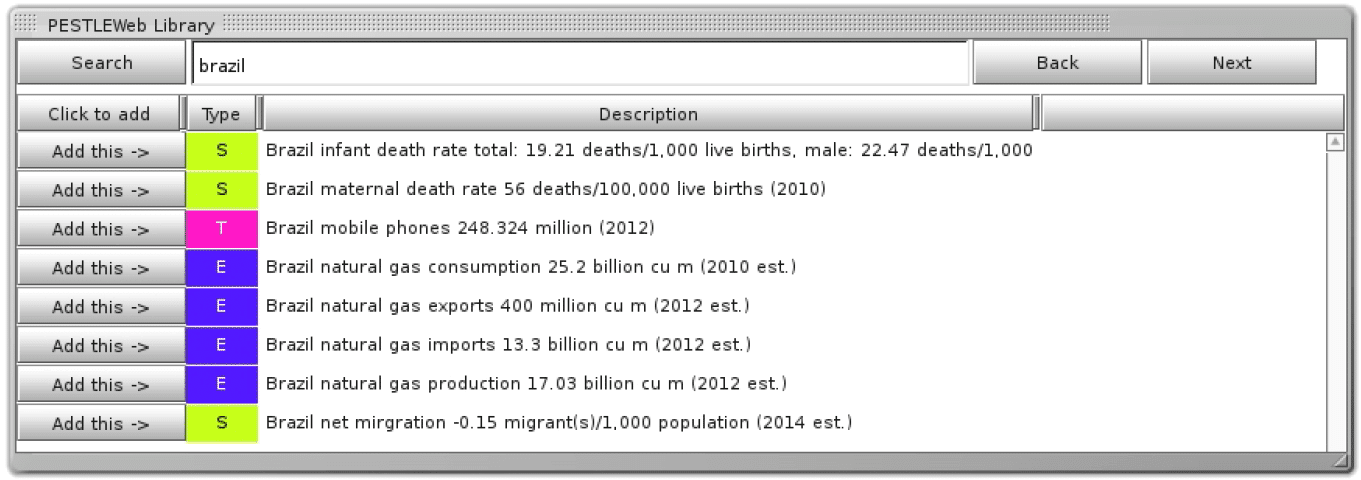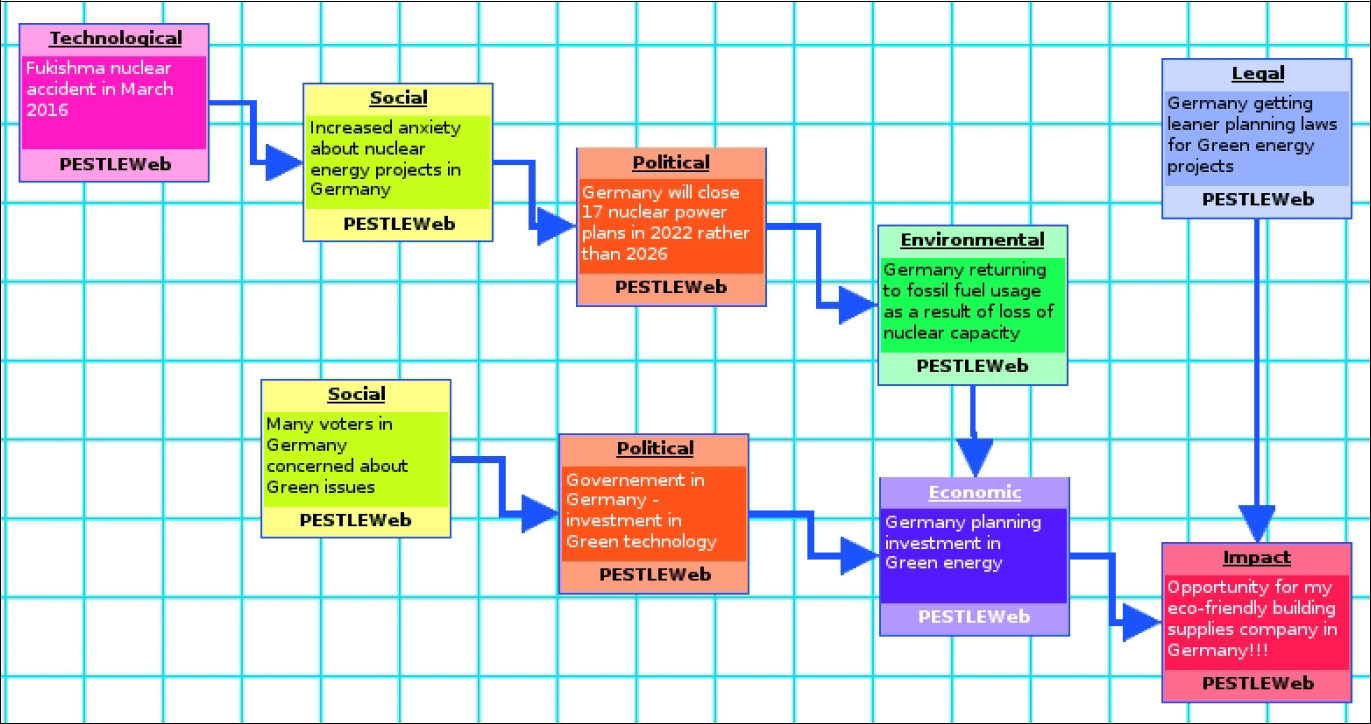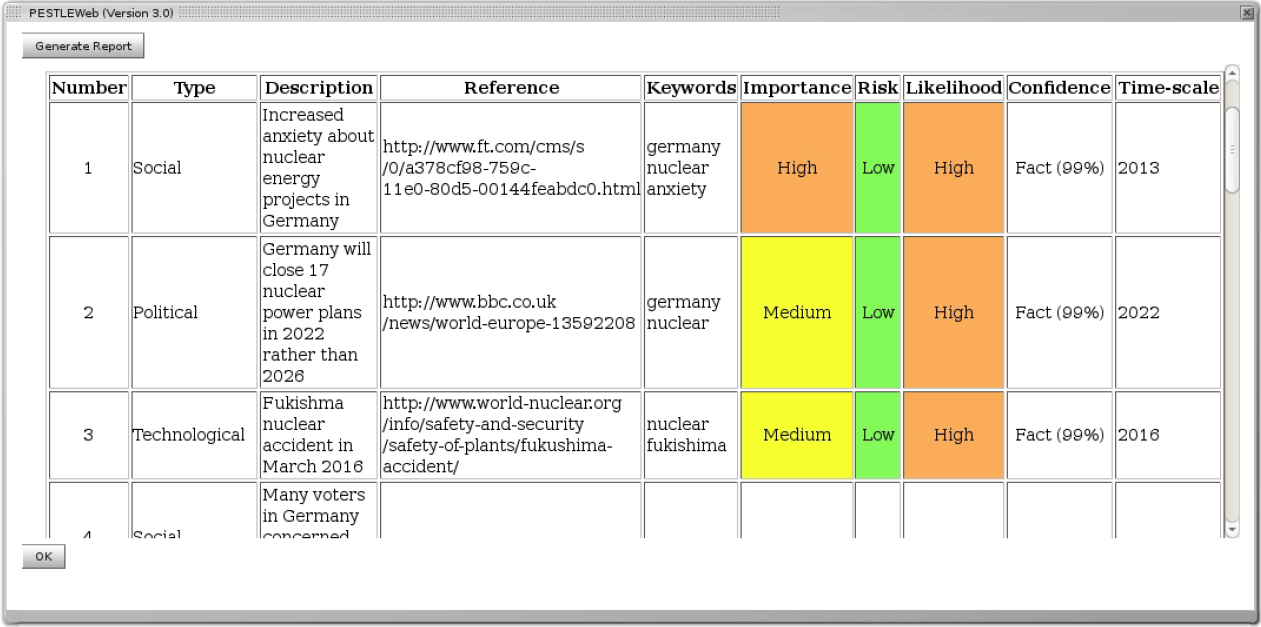Scanning your business environment is absolutely critical for developing business and marketing strategy. A strategy which is successful at one time and place can’t be guaranteed to work in the same way for ever more. In fact – it may never work again because the world has changed!
Successful businesses need to adapt and respond to their business environment in a dynamic way.
If you have been looking at the other resources on this website you will have a good idea of what PESTLE analysis is, how it is used and why it is so important. In this article we will introduce you to another, graphical tool which you can use to perform PESTLE analysis quickly and effectively.
PESTLEWeb is a graphical ‘tool’ that allows you to map out your PESTLE Analysis as a picture. It helps to use pictures because...
- Human beings are very good at absorbing information visually through pictures
- To do a good PESTLE analysis you need to show connections between things in the environment and impacts on your business
- Pictures are a great way of building collaboration – your team are more likely to look at, and comment on a poster on the wall than study a long report
The PESTLEWeb method was developed by Dr Rob Collins as part of his research at Henley Business School in the UK. His research showed that people judge PESTLEWeb diagrams to be significantly more logical and convincing than traditional written analysis.
That research has now been developed into a free website called PESTLEWeb.com which includes a Canvas App for drawing and researching PESTLEWebs.
How to Create a PESTLEWeb
Finding your Initial Issues
You can sketch a PESTLEWeb using pen and paper. You can work as a team using postit™ notes on a white board. Or, you can use PESTLEWeb Canvas on the PESTLEWeb.com website.
PESTLEWeb uses the same ‘building blocks’ as traditional PESTLE analysis. You are looking for issues, problems and changes in your business environment in each of the 7 categories:
P – Political
E – Economic
S – Social
T – Technological
L – Legal
E – Environmental / Ecological (Green issues)
You can start to find those in newspapers, journals, using web-searches or by brain-storming with your team. And now can also use the PESTLEWeb library to search for key facts.

Draw your picture – tell your story
Rather than tabulating your results, each issue gets recorded on a single block on the diagram. This means that you can move issues around, shuffle them up, and group them together.
All of the time you should be trying to make sense of what is happening in your environment. You need to work out what matters and why. Shuffling these issues graphically, or moving postit™ notes around a white board is a great way to build that understanding.
You should be looking for the way that issues are connected. Ask yourself:
- Why did this happen?
- What does this mean for my business (Impact)?
- What might happen next?
That is, you are trying to create a story that connects these ideas together. Arranging issues like this helps build understanding for you and your team.
As you start to build your story, you connect issues together on your diagram .. like this ..

Write your PESTLE Analysis Report
Of course, there are still going to be times when you need a written PESTLE Analysis report – to show an investor or to hand in as a course assignment! One of the advantages of using a web-based tool like the PESTLEWeb canvas is that those reports can be generated automatically from your diagram.

Share your Results with your Team!
Make sure you get the most benefit from what ever type of PESTLE analysis you do. Don’t do it once, then just forget about it – it is too valuable for that! Much better to make your analysis visible. Distribute it by e-mail. Post it on your internal company website. Share it with your business associates. Print a large format PESTLEWeb diagram, pin it to the wall and encourage people to make additions, corrections and improvements.
Your team can be the eyes and ears of your business – constantly acting as your business radar. Encourage them to update your PESTLEWeb with their own comments and ideas. Always ask challenging questions – “What has changed?” and “What matters to our business?”
So, which ever form of PESTLE Analysis you choose your business can adapt in a smart way to its environment.
Where Next?
You can see the PESTLEWeb canvas in action in this 3 minute video.
Learn more about the PESTLEWeb method from this slideshare deck:
The Easy Way to do PEST and PESTLE analysis from PESTLEWeb
Learn more about the PESTLEWeb method at PESTLEWeb.com










